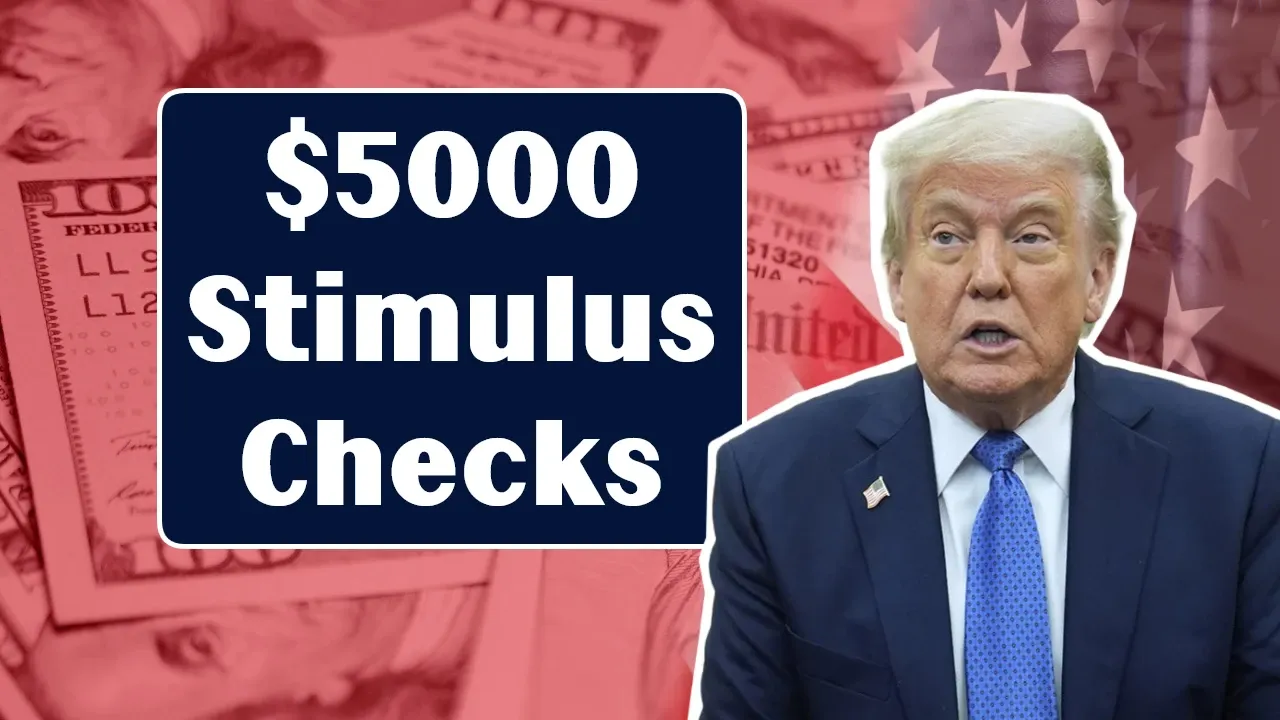Join on WhatsApp
Get the latest updates directly on WhatsApp – motivation, news & more!
As 2025 unfolds, a growing number of Americans have seen social media posts and online videos claiming that $5,000 stimulus checks are coming their way. However, official government records show no confirmed or approved $5,000 federal stimulus payment from the U.S. Department of Treasury, the Internal Revenue Service (IRS), or any new congressional legislation. Despite online chatter about a so‑called “DOGE Dividend” or “Efficiency Stimulus,” there is no legally authorized program issuing such checks.
Here’s a detailed look at the origins of the rumor, the real status of the DOGE Dividend proposal, and what taxpayers should know to avoid scams in 2025.
No Official $5,000 Federal Stimulus Confirmed
The Biden‑era pandemic stimulus programs ended years ago, with the last payments reaching eligible Americans by 2021. Individuals who missed those benefits were allowed to claim them later through the Recovery Rebate Credit (RRC) on federal tax returns—but even those payments were capped at $1,400 per person.
As of October 2025, neither the IRS nor Congress has approved new federal stimulus checks of any amount. The IRS continues to warn taxpayers to ignore unsolicited emails, texts, or websites promising “pre‑approval” for $5,000 checks, as these are highly likely to be scams.
Understanding the DOGE $5,000 Stimulus Concept
The rumor about a new $5,000 payment stems from a theoretical policy known as the DOGE Dividend—an idea originally proposed by James Fishback, CEO of Azoria, and publicly discussed by Elon Musk during early 2025. DOGE stands for the Department of Government Efficiency, a Trump‑era administrative initiative aimed at cutting wasteful federal spending and streamlining public programs.
The concept claims that savings from government efficiency reforms could be redirected to taxpayers in the form of a $5,000 payment per household. Fishback suggested that 20% of efficiency savings could be directly refunded to Americans, calling it a “dividend for taxpayers.”
In theory, if the federal government achieved up to $2 trillion in savings, it could fund these $5,000 payouts. However, to date, recorded savings through DOGE range from $115 billion to $142 billion, far below the threshold required to support nationwide payments.
Public Statements and Political Support
Elon Musk, who has taken a cooperative advisory role in the DOGE program, acknowledged interest in the dividend concept but clarified that final authorization rests with President Donald Trump and Congress. Musk stated publicly:
“I will check with the President. Obviously, the President is the Commander‑in‑Chief, so this is entirely up to him.”
President Trump and his economic team have expressed support for incentivizing government efficiency but have not announced any official signing or directive approving $5,000 payments. Until such an executive order or bill passes Congress, the idea remains a speculative proposal without legal or financial foundation.
Eligibility Hypothetically Proposed for DOGE Dividend
Although no payments exist, the discussed eligibility structure for a potential DOGE Dividend includes several conditions similar to previous federal programs:
- Must be a U.S. resident with a valid Social Security Number or Taxpayer ID.
- Must have filed a federal income tax return for the latest fiscal year.
- Must have earned taxable income and paid federal taxes exceeding credits or refunds received.
- Likely to target middle‑class and working‑class taxpayers rather than those with no tax liability.
Low‑income non‑filers, undocumented individuals, and those outside the federal tax system would probably be excluded, based on the preliminary concept shared by DOGE officials and think‑tank economists.
Legislative and Financial Barriers
The DOGE Dividend idea faces considerable political and fiscal challenges. Current government savings are far below projections needed to distribute $5,000 to over 150 million Americans. This would require a total fund approaching $750 billion to $800 billion, well beyond present balances.
Additionally, implementing such a plan would require:
- Formal approval through Congressional legislation.
- Allocation of funds through the Department of Treasury.
- Oversight from the IRS to verify eligibility and process payments.
Congressional leaders and budget analysts remain cautious about any new large‑scale direct‑payment initiative due to inflation control measures and existing fiscal tightening efforts under the current federal budget.
Economic Concerns Among Experts
Prominent economists have pointed out that another multi‑billion‑dollar stimulus of this magnitude could intensify inflationary pressures already present in key sectors like housing, energy, and food. The Federal Reserve continues to balance interest rate stability with deficit management, leaving little room for unsanctioned mass payments.
Experts agree that government efficiency reforms may contribute to long‑term economic health but distributing those savings as direct cash would require bipartisan negotiation and budgetary realignment—neither of which has yet occurred.
Growing Online Scams and Misinformation
The surge in online searches about “$5,000 stimulus checks” has led to increased scam activity. Fraudulent websites mimic government domains, claiming to offer registration links for DOGE Dividend payments. The IRS has issued multiple warnings emphasizing that government agencies never send unsolicited messages requesting banking details or fees for benefit processing.
Citizens should rely exclusively on IRS.gov or verified federal press releases for any news about programs affecting their taxes or direct deposits. Checking official portals prevents identity theft or fraudulent account activity.
What Stimulus Programs Actually Exist in 2025
While no nationwide $5,000 checks exist, Americans can still explore legitimate aid programs active in 2025:
- Recovery Rebate Credit (RRC) Claims: For those who never received 2020–2021 stimulus rounds.
- Earned Income Tax Credit (EITC): For low‑to‑moderate‑income earners.
- Child Tax Credit (CTC): For taxpayers with dependent children.
These credits remain processed by the IRS through annual tax filings and provide real financial benefits—without any special enrollment forms or third‑party websites.
The Current Status of the $5,000 Stimulus Proposal
As of now, the DOGE Dividend proposal is unapproved and still in discussion stages within policy circles. No executive order, congressional bill, or funding allocation exists to move it forward in 2025. Its future viability will depend on verified government savings, economic conditions, and political consensus over the coming year.
For now, Americans should continue filing taxes accurately, track official updates from the Department of Government Efficiency, and disregard any unofficial “stimulus sign‑up” links online.
Final Takeaway
The viral claims of a $5,000 government stimulus this year are unfounded. While the DOGE Dividend idea may represent a new direction in government efficiency policy, it remains hypothetical and lacks legislative approval. With inflation, fiscal discipline, and federal debt at the forefront of national priorities, it is unlikely that such widespread checks will be issued without major policy debate.
In the meantime, staying vigilant against scams and following official government communication channels is the best way for citizens to protect their information and understand real relief opportunities as they emerge.




